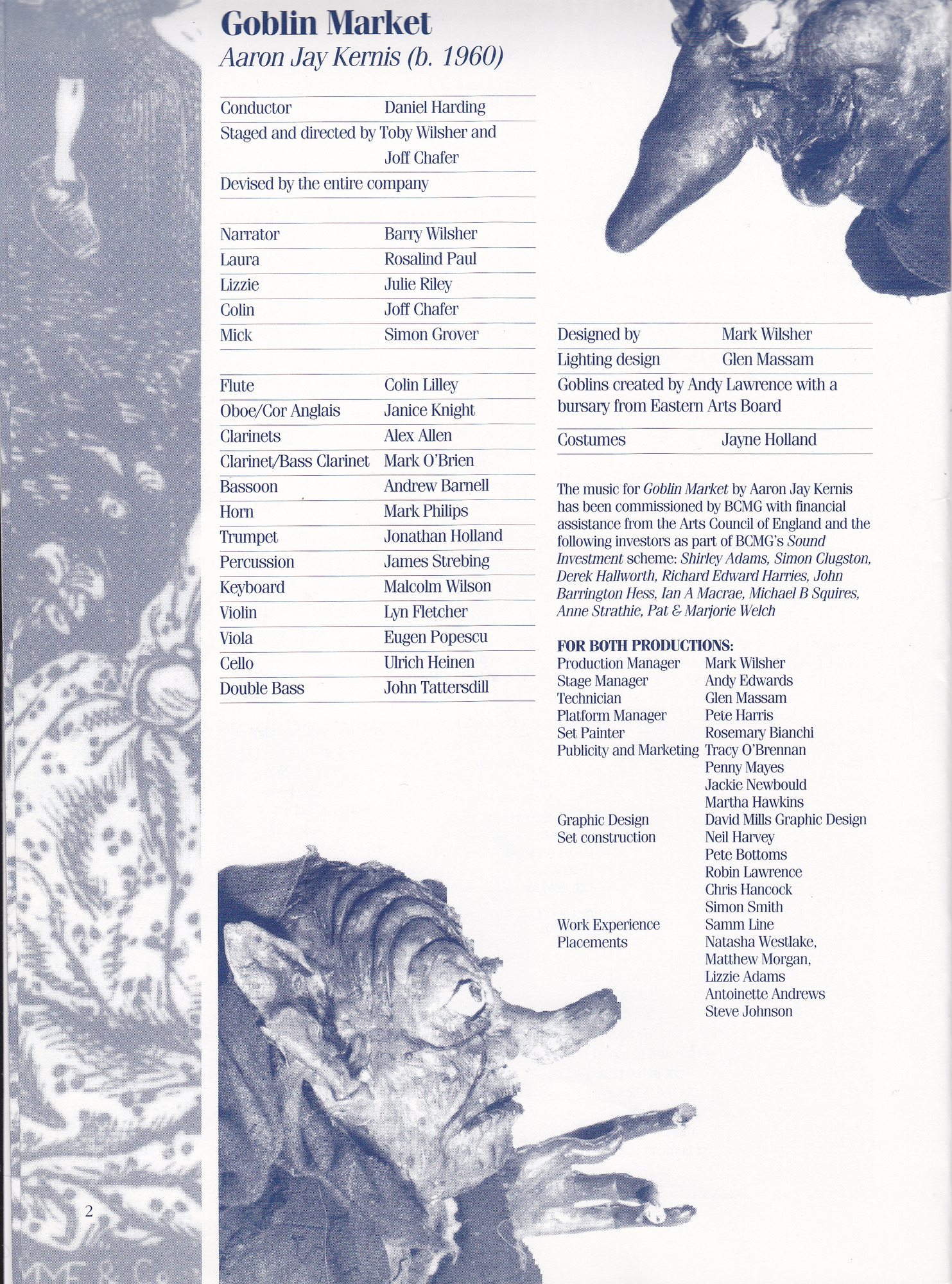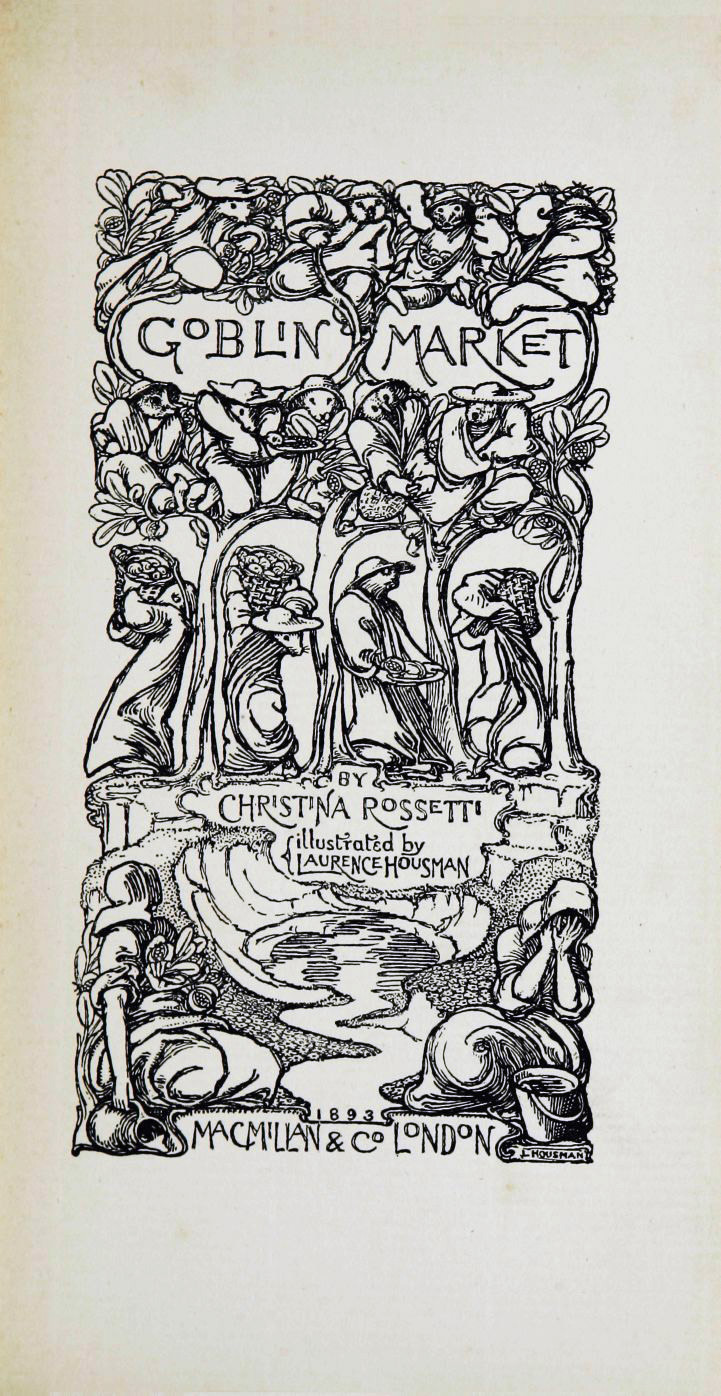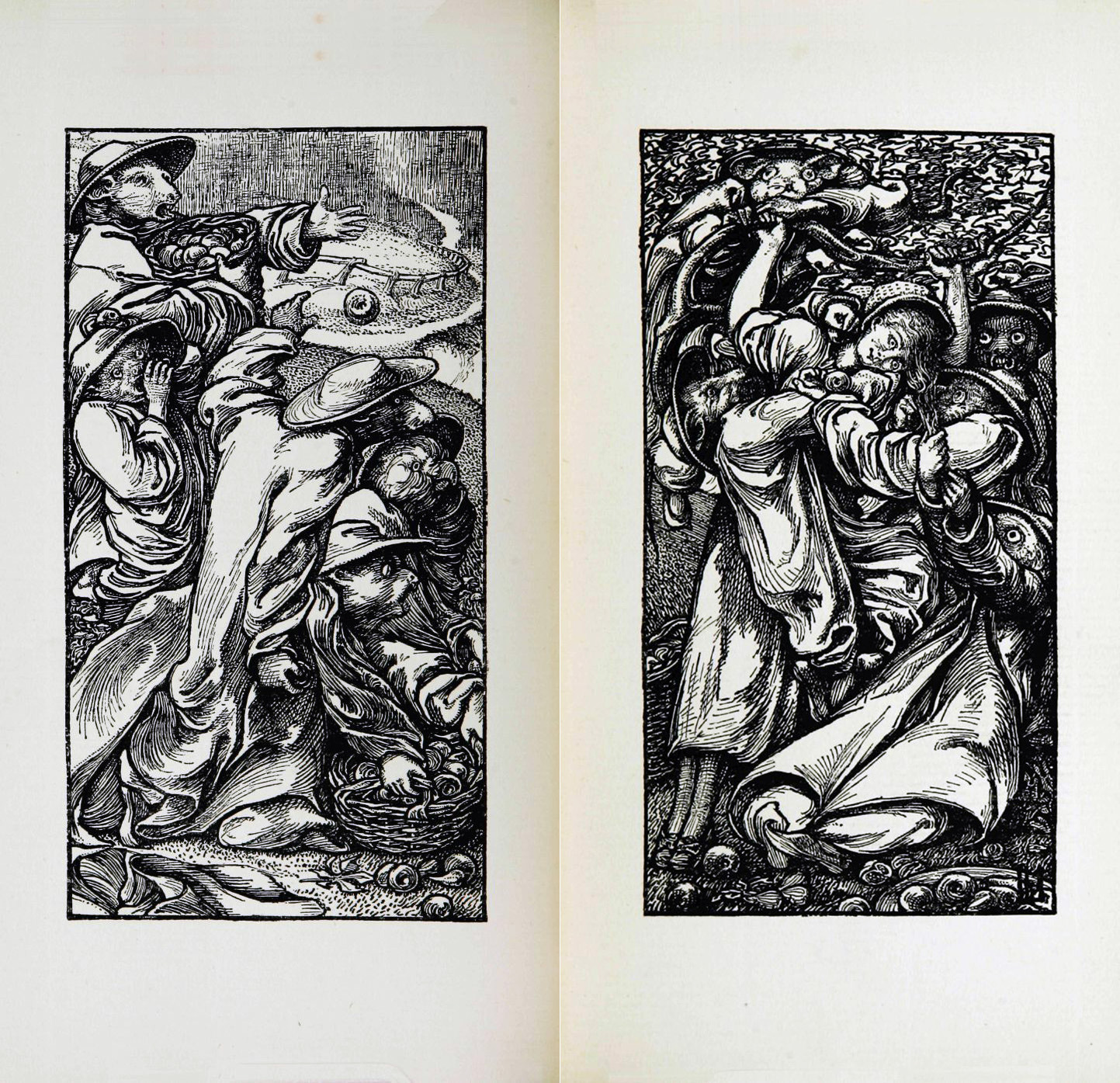Combining the Verbal, Visual, and Musical
text, illustration, and music
Lorraine Janzen Kooistra’s important book Christina Rossetti and Illustration: A Publishing History focuses on a particular inter-art context for Christina Rossetti and her writing: the intersection of the verbal and visual. Meanwhile, the Christina Rossetti in Music website seeks to open up to inquiry another inter-art field of study: the intersection of text and music. In regards to Aaron Jay Kernis’s Goblin Market, an argument can be made that the 1995 Trestle Theatre production instances an important convergence of three streams of Rossetti interpretation: the textual, the visual, and the musical.
The 1995 Trestle Theatre production of Kernis’s Goblin Market is the final instance presented by Kooistra in her comprehensive study of the publishing history of Christina Rossetti and illustration. For Kooistra, the 1995 Trestle Theatre production was ground-breaking in staging “a new form of illustration operating live in three dimensions” (p. 270). Since her focus is on verbal/visual relations, Kooistra does not offer any description or analysis of Kernis’s composition; instead, Kooistra focuses on illustration’s influence in this stage production and provides evidence of the ways in which the Trestle Theatre Company’s mime production was indebted to the rich history of illustrated versions of Rossetti’s “Goblin Market.” Kooistra mentions the inclusion in the program of details from Dante Gabriel Rossetti’s 1862 frontispiece illustration (p. 272). She also draws attention to the puppetmaker Andy Lawrence’s inspiration in Arthur Rackham’s illustrations of “Goblin Market.” The look and feel of the goblin puppet design was intended to highlight the poem’s “unnerving menace” by representing “a dark timeless force, mingling with the undergrowth, ready to trick corrupt, pervert” (Lawrence, qtd in Kooistra, p. 272). Lawrence wrote, “I thought long and hard about the approach I would take to Goblin Market. I did not wish to make the eponymous chaps in any way tame or sweet in a Beatrix Potter style, which, given the animal like references (wombat-, ratel-, cat-, and rat-like) was a possibility. . . . To me, the goblins are dangerous, crude, ancient and fleshy! This is what I wanted to represent.”
a chain of inter-art influence
Kooistra also cites details from which we might infer that Kernis’s musical composition was possibly likewise shaped and influenced by the poem’s illustration history. Kooistra quotes from Kernis’s “A Note on Goblin Market” that was included in the program for the Birmingham Contemporary Music Group/Trestle Theatre Company production. In this note the composer recalls that he discovered the poem in 1989 when he “first found the Dover reprint of it (with piquant illustrations by Laurence Housman) tucked away in a small college bookstore in Maine” (Kernis, “A Note on Goblin Market,” qtd in Kooistra, p. 270). The fin-de-siècle illustrator Laurence Housman’s fully illustrated edition of “Goblin Market” (1893) presented a darker, more grotesque and more sexualized vision of Rossetti’s poem, a pictorial representation that Rossetti herself disliked (Kooistra, pp. 56-57, 85-90).
Although Kooistra does not draw a connection between these observations about Housman’s illustrations and the musical score that Kernis composed inspired by Housman’s illustrated book, such a connection and line of influence seems very much in evidence when one brings analysis of the music into the critical frame of reference, for Kernis’s musical interpretation is dark and adult in a manner that resonates with the Housman illustrated text. Given that Kernis’s Goblin Market expresses an interpretation of the poem that aligns with Housman’s, we can now see a line of influence from text to image to music.
Extending this chain of influence even further, the particular staged version presented by Trestle Theatre Company is an interpretation of both Rossetti’s text and Kernis’s musical score. The program notes indicate that the production was staged and directed by Toby Wilsher and Joff Chafer and “Devised by the entire company.” The mime’s very modern interpretation of the poem presented the story in terms of “teenage pregnancy, delinquency, drugs and Aids [sic], while at the same time keeping components of the original ethos with girls in sheet white dresses and long hair” (Fallows), and the goblins’ masks present a dark and threatening version of the goblins. This darker vision is a “new writing” of Rossetti’s poem (Wilsher, “What’s in a Name?”), and it is also unmistakably an extension of “Goblin Market” as seen through the lens of Kernis’s score, itself shaped by Housman’s illustrations. Thus, in Kernis’s work the textual, pictorial and musical all intersect in complex and fascinating ways as influence flows and new meanings are extracted from Rossetti’s text—through Housman’s visual realization of it, to Kernis’s aural interpretation of the text, and to the 1995 staging of Goblin Market.
Acknowledgement:
Many thanks to Dr. Lorraine Janzen Kooistra (Ryerson University) for scholarly support and for generously offering to the Christina Rossetti in Music project her collection of primary materials related to stage adaptations of “Goblin Market.”
Sources:
Fallows, David. “BCMG/The Goblin Market.” Review of performance of Aaron Jay Kernis's Goblin Market. Guardian, 19 January 1995.
Kernis, Aaron Jay. “A Note on Goblin Market,” double-bill program for The Soldier’s Tale and Goblin Market, 12-22 January 1995.
Kooistra, Lorraine Janzen. Christina Rossetti and Illustration: A Publishing History. Athens, OH, Ohio UP, 2002.
Lawrence, Andy. “Of Goblins, Puppets and Mystery,” double-bill program for The Soldier’s Tale and Goblin Market, 12-22 January 1995.
Program notes, double-bill program for The Soldier’s Tale and Goblin Market, 12-22 January 1995.
Rossetti, Christina. Goblin Market. Illustrated by Laurence Housman. London, Dover, 1893.
Wilsher, Toby. “What’s in a Name?”, double-bill program for The Soldier’s Tale and Goblin Market, 12-22 January 1995.




